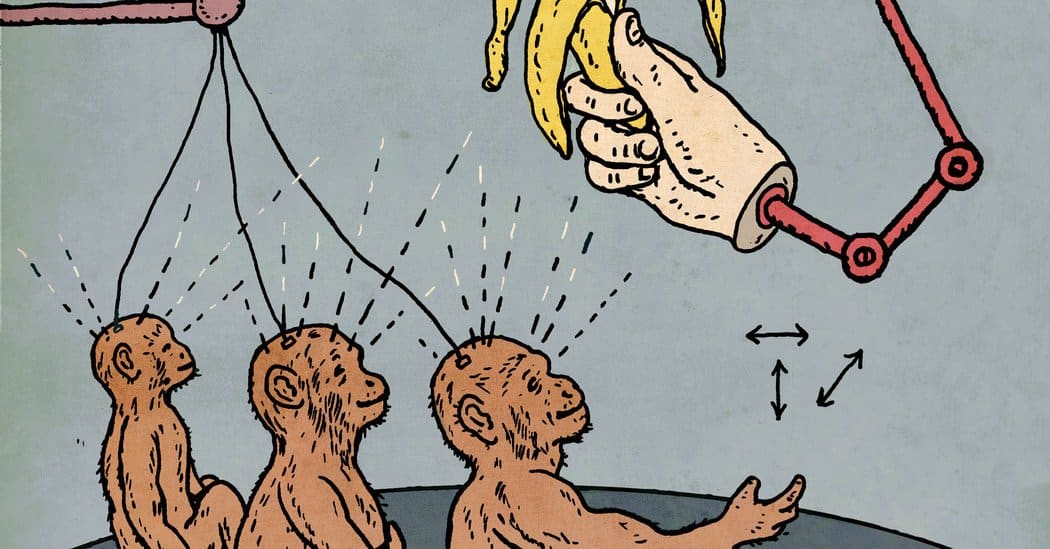Injecting Electronic Instructions into Monkey Brains
In a study that sounds like an outtake from a sci-fi movie, neuroscientists at the University of Rochester have now injected electronic instructions into the premotor cortex of monkeys that resulted in the animals getting instructions to complete actions without any further ones being required.
In reaching to grasp an object, the premotor cortex commonly is thought to translate visual information received from the posterior parietal cortex of the brain into motor plans specific to the object’s location and shape. The PM also may participate in associating instructional cues with particular movements. The activity of PMd neurons also has been shown to change as monkeys learn arbitrary associations between particular visual or auditory instructions and specific movements.
Now, imagine that you had a device implanted in your brain that could shortcut the pathway and “inject” information straight into your premotor cortex. Yep, this is precisely what the neuroscientists have accomplished.
“Researchers have been interested primarily in stimulating the primary sensory cortices – the somatosensory cortex, visual cortex, and auditory cortex – to input information into the brain,” said senior author Marc H. Schieber, a physician and researcher at the University of Rochester. “What we are showing here is that you don’t have to be in a sensory-receiving area in order for the subject to have an experience that they can identify.
”In order to study the premotor cortex, Dr. Schieber and his co-author, Dr. Mazurek, trained two rhesus monkeys to play a game.
The monkeys sat in front of a panel equipped with a button, a sphere-shaped knob, a cylindrical knob, and a T-shaped handle. Each object was ringed by LED lights. If the lights around an object switched on, the monkeys had to reach out their hand to it to get a reward — in this case, a refreshing squirt of water.
Each object required a particular action. If the button glowed, the monkeys had to push it. If the sphere glowed, they had to turn it. If the T-shaped handle or cylinder lit up, they had to pull it.
“The monkeys can’t tell us what they are feeling, so training them to associate the microstimulation with a movement is the way we are able to confirm that they have felt an urge or had some kind of experience,” Schieber said.

After the monkeys learned how to play the game, Dr. Mazurek and Dr. Schieber had them play a wired version. The scientists placed 16 electrodes in each monkey’s brain, in the premotor cortex.
The lights were turned off but the microstimulations continued and the monkeys were able to move the correct knows in the proper way when microbuzzed. To prove that the areas of the premotor cortex were not predisposed to the movements, the researchers switched the electronic impulse injectors around and retrained the subjects. When the lights were turned off, the monkeys continued to move the proper knows. (Does this sound like training them to vote?)
This hints that the sensory regions of the brain, which process information from the environment, can be bypassed altogether. The brain can devise a response by receiving information directly, via electrodes.

Dr. Mazurek said, “This could be very important for people who have lost function in areas of their brain due to stroke, injury, or other disease. We can potentially bypass the damaged part of the brain where connections have been lost and deliver information to an intact part of the brain.”
A next step for the research is to try this type of low-amplitude microstimulation in humans. “When you stimulate the somatosensory or visual cortex directly, the subject typically feels something on their skin or sees something in their vision,” Schieber explains. “This shows you may be able to deliver the desired information to a person’s brain without these perceptions.”
He adds that more animal research is important as well, to continue to identify additional parts of the brain where microstimulation evokes distinguishable experiences.































